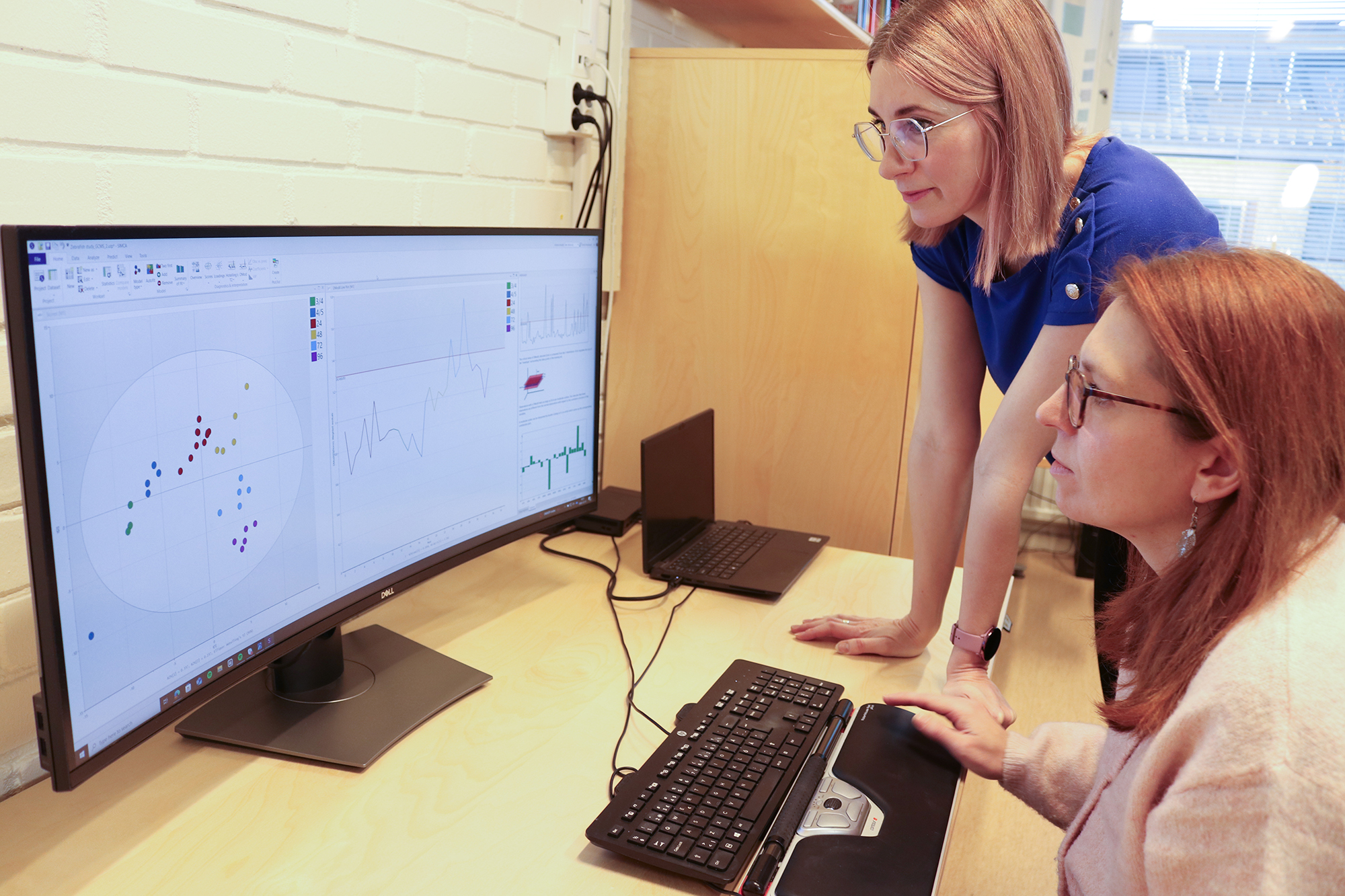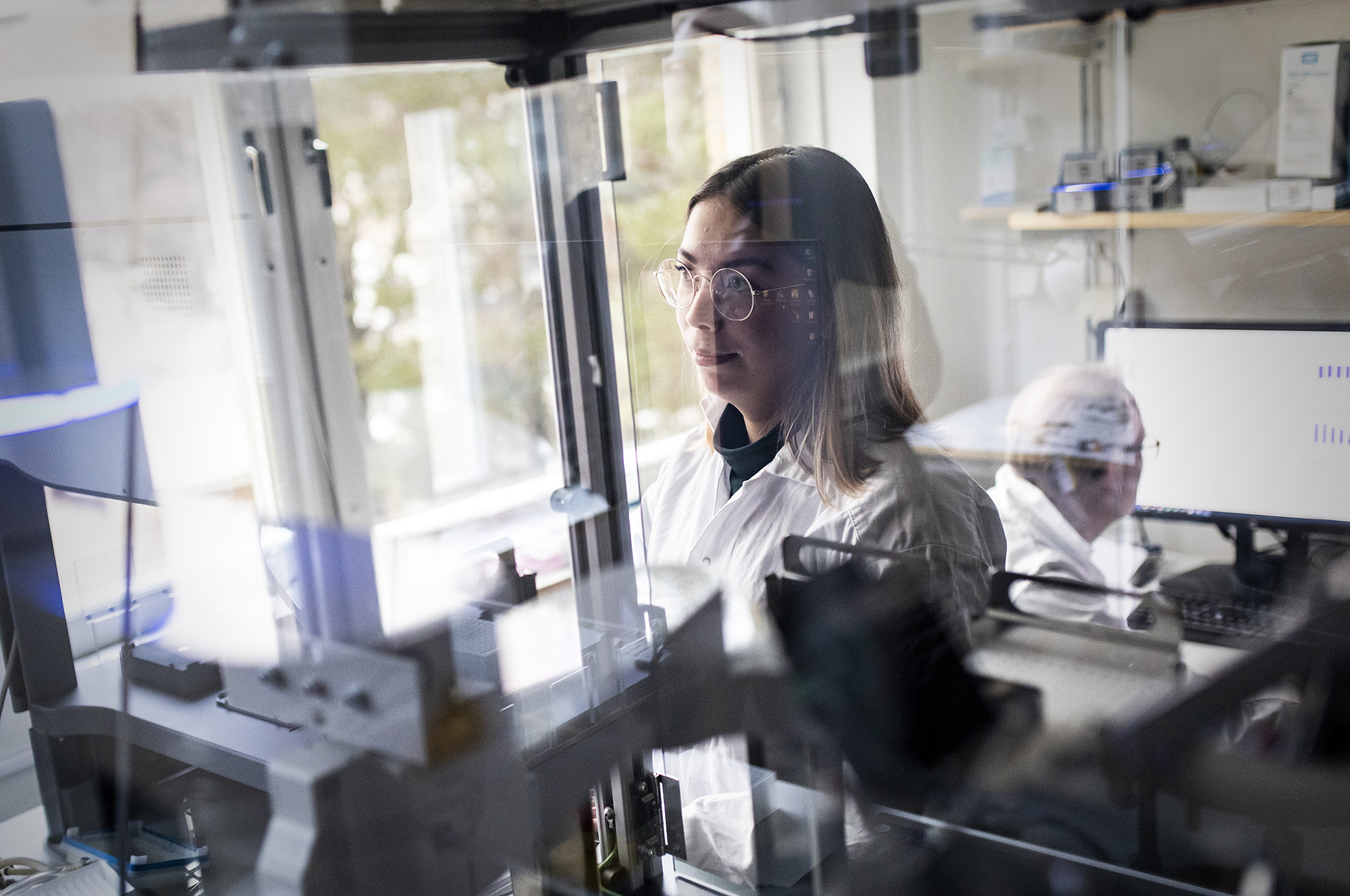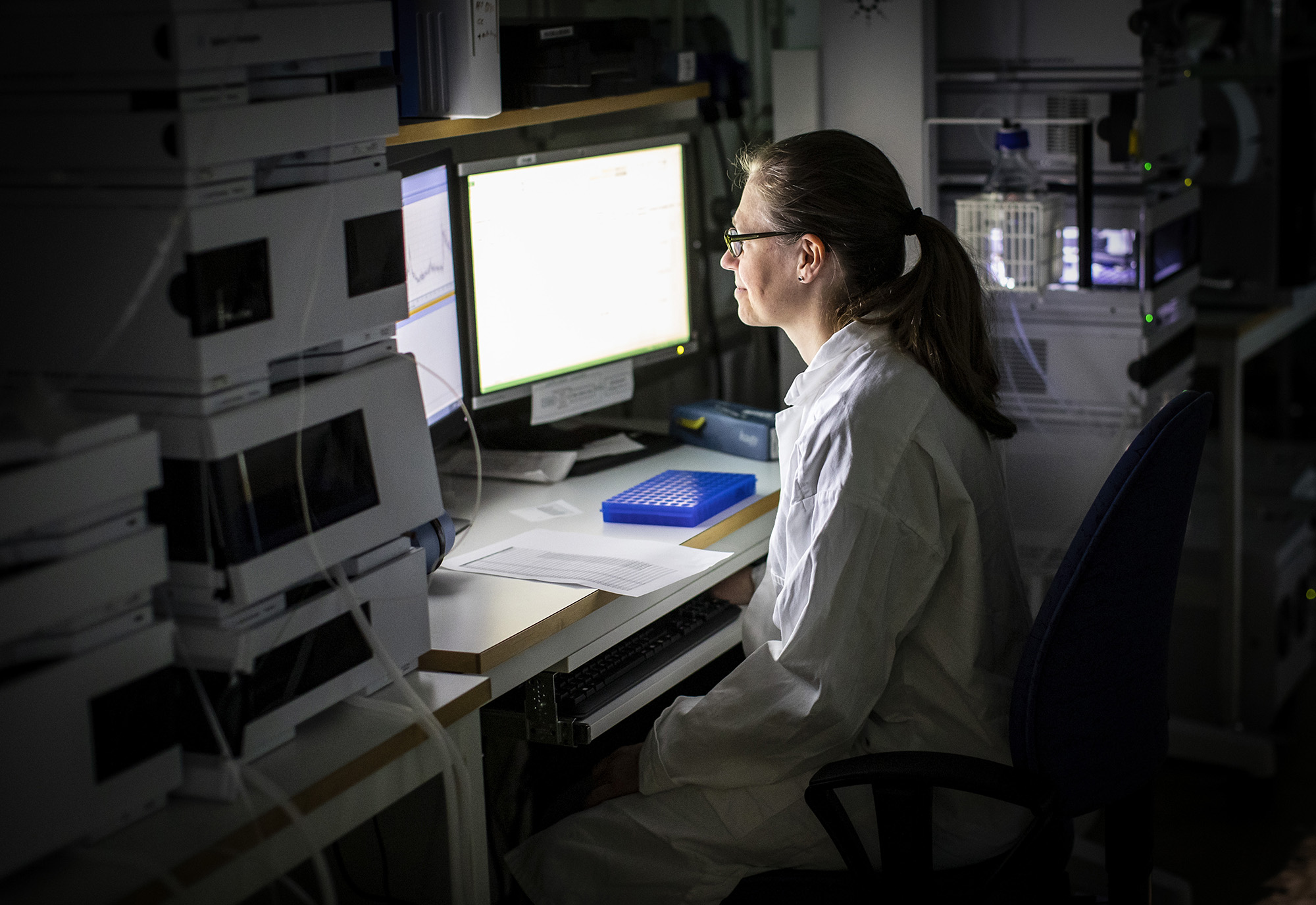When people ask me what I do for a living and I tell them I’m a researcher or research coordinator, next comes the dreaded question: “In what area?”. This is when slight panic sets in. How do I explain what metabolomics is and at the same time try to make it sound interesting!? After me babbling for a while, I start to see the look of confusion (or boredom!) on most people’s faces, with me trying to change the subject as quickly as possible!
In an attempt to improve my delivery, I’d like to give you a short introduction to the importance of metabolomics – and at the same time, present the new Computational Metabolomics Group we’re launching within SciLifeLab.

Dr. Kate Bennett (CASP) and Dr. Ilona Dudka (Swedish NMR Centre), combining expertise and working together as part of the Computational Metabolomics Group, SciLifeLab. Photo: Anna Shevtsova
What are metabolites?
Metabolites are small molecules found in all living organisms, either produced by the organism itself or obtained through food and diet. These molecules play essential roles in the processes that keep us all alive and functioning. Well-known examples include glucose, amino acids (the building blocks of proteins), lipids and even feel-good neurotransmitters like dopamine and serotonin.
So, why are these molecules important?
Metabolites act as a snapshot, revealing what’s going on inside and tell stories that impact every single one of us. They reveal how we respond to diet, stress, medications, or even environmental changes. Have you ever wondered why you feel so good after eating a piece (or box!) of chocolate? Or why some people respond better to certain medications while others experience horrible side effects? Metabolomics can help answer these questions.
Metabolomics is a cutting-edge field and an essential tool for understanding biological processes. By studying thousands of these small molecules, we can uncover:
- Early markers of disease for faster diagnoses and better treatments
- Valuable insights into the pathogenesis of disease
- How plants defend themselves against stress or pests
- The hidden impacts of environmental exposures on human health

Inside the mass spectrometry lab: Cecilia Pettersson at the Swedish Metabolomics Centre, Umeå. Photo: Mikael Wallerstedt
The challenge arises when all these metabolites are studied together – the data becomes huge. Without the right tools and expertise, extracting relevant information is like finding a needle in a haystack.
Luckily, help is out there. I work at the Computational Analytics Support Platform (CASP), a local infrastructure at Umeå University that provides support and training to life science researchers with the analysis of complex experimental data, including metabolomics. Over the years, we’ve seen a growing need for support with not only the analysis, but also the biological interpretation of metabolomics data, which can be just as challenging.
Computational Metabolomics Group, SciLifeLab
This led to the recent development of the national Computational Metabolomics Group, a joint effort between the Metabolomics Platform and National Bioinformatics Infrastructure Sweden (NBIS), within SciLifeLab, led by myself and Associate Professor Carl Brunius at Chalmers University of Technology.
Our mission is to provide advanced computational support for metabolomics data analysis, interpretation and workflow development while bringing together experts from units across SciLifeLab’s Metabolomics Platform, all of which provide cutting-edge services in metabolomics. This includes the Swedish Metabolomics Centre (Umeå), the Exposomics Platform (Stockholm), Chalmers Mass Spectrometry Infrastructure (CMSI), the Swedish NMR Centre and bioinformatics experts from NBIS.
By doing so, we help researchers overcome this common bottleneck and transform complex data into meaningful biological and chemical interpretations. Starting in January 2025, we are also excited to welcome a new data scientist to the Umeå site, further expanding our expertise in advanced data analytics.

Dr. Annika Johansson, Head of Unit at the Swedish Metabolomics Centre and Platform Coordination Officer for the SciLifeLab Metabolomics Platform. Photo: Mikael Wallerstedt
Phew! If you’ve made it this far, I want to say a huge thank you for taking the time to read this. I hope I’ve given you a better idea about the importance of metabolomics and sparked some thoughts on how it may benefit your own projects.
If you would like more information on how we can help, please email me at katie.bennett@umu.se and visit the webpages above.

